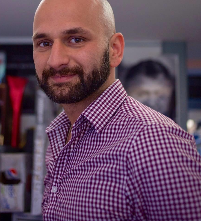 A Targeted Multiplex MRM LC-MS/MS Immunoassay for Characterisation of Antibody Response to SARS CoV2 Vaccination A Targeted Multiplex MRM LC-MS/MS Immunoassay for Characterisation of Antibody Response to SARS CoV2 Vaccination
Ivan Doykov (1), Justyna Spiewak (1,2), Kimberly C. Gilmour (3), Joseph M Gibbons (4), Corinna Pade (4), Mahdad Noursadeghi (5), Áine McKnight (4), Charlotte Manisty (6, 7) Thomas Treibel (6, 7), Rosemary J Boyton (8,9), Daniel M Altmann (10), Mala K Maini (5), Tim Brooks (11), Amanda Semper (11), James C Moon (6, 7), Kevin Mills (1, 2), Wendy Heywood (1, 2)
(1) Translational Mass Spectrometry Research Group, Genetics & Genomic Medicine Dept., UCL Institute of Child Health, London
(2) Great Ormond Street Biomedical Research Centre, UCL Institute of Child Health London
(3) Great Ormond Street Children's Hospital NHS Foundation Trust, Great Ormond Street, London, WC1N 3JH, UK
(4) Blizard Institute, Barts and the London School of Medicine and Dentistry, Queen Mary University of London, London, UK.
(5) Division of Infection and Immunity, University College London, London, UK
(6) St Bartholomew’s Hospital, Barts Health NHS Trust, London, UK.
(7) Institute of Cardiovascular Science, University College London, London, UK
(8) Department of Infectious Disease, Imperial College London, London, UK
(9) Lung Division, Royal Brompton and Harefield Hospitals, London, UK
(10) Centre of Molecular Immunology and Inflammation, Imperial College London, UK
(11) National Infection Service, Public Health England, Porton Down, UK

|
Ivan Doykov, BSc (Presenter)
University College London |
|

